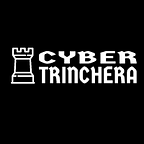Tryhackme: Overpass
Overpass is an easy TryHackMe machine in which we will exploit a broken authentication bug to gain access to an ssh key in the application. Later, we will escalate privileges by impersonating a script running in a scheduled job.
As usual in TryHackMe, we must connect to the VPN or use the AttackBox. I will choose the VPN. We press the Start Machine button, and a minute after, they show us the IP address. Now, we proceed to do the initial recognition with Nmap:
nmap -p- -sV -Pn $IPThe -p parameter with the hyphen indicates to scan all ports, the -sV parameter to fingerprint the versions used, and -Pn to scan the machine even if it does not respond to ping.
We can see that the machine has only a web server and a SSH server exposed. Lets dig into web server.
First of all, by fuzzing we could find some juicy endpoints.
On the admin endpoint we can see a javascript file called login.js that set the session cookie on suscesfull auth:
async function login() {
const usernameBox = document.querySelector("#username");
const passwordBox = document.querySelector("#password");
const loginStatus = document.querySelector("#loginStatus");
loginStatus.textContent = ""
const creds = { username: usernameBox.value, password: passwordBox.value }
const response = await postData("/api/login", creds)
const statusOrCookie = await response.text()
if (statusOrCookie === "Incorrect credentials") {
loginStatus.textContent = "Incorrect Credentials"
passwordBox.value=""
} else {
Cookies.set("SessionToken",statusOrCookie)
window.location = "/admin"
}
}We can generate the cookie and bypass the auth from the browser console.
Cookies.set("SessionToken", 1)Now we can see an encrypted SSH key for james on the page:
Now we can crack the key of this ssh key to be able to log in as James in the SSH service.
Now we can access the system and see a to-do list, one of the to does is talking about an automated script. It would be nice to keep an eye on it.
Consulting the crontab, we see that it downloads a file and executes it.
If we look at its content, we will see that it calls date without specifying the complete path.
Since we can manipulate /etc/hosts, we can make the domain points to our machine and exploit this to serve any script we want.
Once manipulated, we can create a script with a reverse shell and serve it.
After a short time, as soon as the cronjob is executed we will get a shell as root
I hope you enjoyed my article and found my content useful. See you in the next article.
